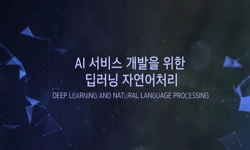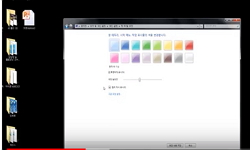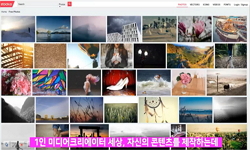As the demand for media content increases, interest in the font of text that makes up digital media content is also increasing to effectively deliver the content. Because fonts are used in various fields, fonts with various characteristics are created...
http://chineseinput.net/에서 pinyin(병음)방식으로 중국어를 변환할 수 있습니다.
변환된 중국어를 복사하여 사용하시면 됩니다.
- 中文 을 입력하시려면 zhongwen을 입력하시고 space를누르시면됩니다.
- 北京 을 입력하시려면 beijing을 입력하시고 space를 누르시면 됩니다.
폰트 스타일의 혼합을 통한 손글씨 폰트 정제에 대한 연구 = A Study on the Refining of Handwritten Font by Mixing Font Style
한글로보기부가정보
다국어 초록 (Multilingual Abstract)
Existing image-based font generation models have the disadvantage of being difficult to adjust detailed font styles such as letter size, stroke shape, and structure because they try to generate fonts in a certain style through small input data. Therefore, this paper proposes a model that can generate fonts based on noise to enable font-style microcorrection.
FontFusionGAN (FFGAN), a model to be introduced in this paper, creates a new font that mixes handwriting with font styles of the Myeongjo and Gothic series when handwriting is made into fonts. FFGAN can produce Korean handwriting fonts that increase readability and completeness while maintaining the unique characteristics of handwriting, which can reduce the time and labor required to produce Korean fonts consisting of 11,172 characters. In addition, FFGAN shows effective results in correcting Chinese handwriting, so it can be used in the production of multilingual handwriting fonts.
As the demand for media content increases, interest in the font of text that makes up digital media content is also increasing to effectively deliver the content. Because fonts are used in various fields, fonts with various characteristics are created, and some people want to make their own handwriting into fonts. Handwritten fonts by humans show the person's characteristics well, but they are often not readable due to problems such as crushed letters or inconsistent sizes.
Existing image-based font generation models have the disadvantage of being difficult to adjust detailed font styles such as letter size, stroke shape, and structure because they try to generate fonts in a certain style through small input data. Therefore, this paper proposes a model that can generate fonts based on noise to enable font-style microcorrection.
FontFusionGAN (FFGAN), a model to be introduced in this paper, creates a new font that mixes handwriting with font styles of the Myeongjo and Gothic series when handwriting is made into fonts. FFGAN can produce Korean handwriting fonts that increase readability and completeness while maintaining the unique characteristics of handwriting, which can reduce the time and labor required to produce Korean fonts consisting of 11,172 characters. In addition, FFGAN shows effective results in correcting Chinese handwriting, so it can be used in the production of multilingual handwriting fonts.
국문 초록 (Abstract)
기존의 이미지 기반 폰트 생성 모델은 적은 입력 데이터를 통해 일정한 스타일로 폰트를 생성하려 하기 때문에 글자의 크기, 획의 모양, 구조 등의 세세한 폰트 스타일 조정은 어렵다는 단점이 있다. 따라서 본 논문에서는 노이즈 기반으로 폰트를 생성하여 폰트 스타일의 미세보정이 가능한 모델을 제안한다.
본 논문에서 소개할 모델인 FontFusionGAN (FFGAN)은 손글씨를 폰트로 제작했을 때 손글씨와 명조체 계열 및 고딕체 계열의 폰트 스타일을 혼합한 새로운 폰트를 생성한다. FFGAN은 손글씨의 고유한 특징은 유지하면서 가독성과 완성도를 높인 한글 손글씨 폰트를 제작할 수 있으며 이는 11,172자라는 많은 글자로 구성된 한글 폰트의 제작에 필요한 시간과 노동을 줄일 수 있다. 또한 FFGAN은 한자 손글씨 보정에도 효과적인 결과를 보여주어 다국어 손글씨 폰트 제작에 사용 가능하다.
미디어 콘텐츠에 대한 수요가 증가함에 따라 내용을 효과적으로 전달하기 위해 디지털 미디어 콘텐츠를 이루는 텍스트의 폰트에 대한 관심도 증가하고 있다. 다양한 분야에서 폰트를 사용...
미디어 콘텐츠에 대한 수요가 증가함에 따라 내용을 효과적으로 전달하기 위해 디지털 미디어 콘텐츠를 이루는 텍스트의 폰트에 대한 관심도 증가하고 있다. 다양한 분야에서 폰트를 사용하기 때문에 다양한 특징을 가진 폰트가 생성되고 본인의 손글씨를 폰트로 제작하려는 사람도 나타났다. 사람이 직접 손으로 쓴 손글씨 폰트는 그 사람의 특징을 잘 나타내지만 글씨가 뭉개지거나 크기가 일관되지 않는 등의 문제로 가독성이 좋지 않은 경우가 많다.
기존의 이미지 기반 폰트 생성 모델은 적은 입력 데이터를 통해 일정한 스타일로 폰트를 생성하려 하기 때문에 글자의 크기, 획의 모양, 구조 등의 세세한 폰트 스타일 조정은 어렵다는 단점이 있다. 따라서 본 논문에서는 노이즈 기반으로 폰트를 생성하여 폰트 스타일의 미세보정이 가능한 모델을 제안한다.
본 논문에서 소개할 모델인 FontFusionGAN (FFGAN)은 손글씨를 폰트로 제작했을 때 손글씨와 명조체 계열 및 고딕체 계열의 폰트 스타일을 혼합한 새로운 폰트를 생성한다. FFGAN은 손글씨의 고유한 특징은 유지하면서 가독성과 완성도를 높인 한글 손글씨 폰트를 제작할 수 있으며 이는 11,172자라는 많은 글자로 구성된 한글 폰트의 제작에 필요한 시간과 노동을 줄일 수 있다. 또한 FFGAN은 한자 손글씨 보정에도 효과적인 결과를 보여주어 다국어 손글씨 폰트 제작에 사용 가능하다.
목차 (Table of Contents)
- 제 1 장 서론 1
- 1.1 연구 배경 1
- 1.1.1 폰트의 중요성 1
- 1.1.2 폰트 제작의 어려움 2
- 1.1.3 손글씨 폰트 제작에 대한 관심 증가 3
- 제 1 장 서론 1
- 1.1 연구 배경 1
- 1.1.1 폰트의 중요성 1
- 1.1.2 폰트 제작의 어려움 2
- 1.1.3 손글씨 폰트 제작에 대한 관심 증가 3
- 1.1.4 제안하는 방법 3
- 1.2 논문의 구성 4
- 제 2 장 관련연구 5
- 2.1 이미지 생성 및 스타일 변환 모델 5
- 2.1.1 GAN 5
- 2.1.2 cGAN 7
- 2.1.3 ProGAN 8
- 2.1.4 StyleGAN 9
- 2.2 이미지 기반 폰트 생성 모델 10
- 2.3 노이즈 기반 폰트 생성 모델 12
- 2.3.1 FMGAN 12
- 2.3.2 CFGAN 13
- 제 3 장 본론 15
- 3.1 FFGAN 모델 구조 15
- 3.1.1 훈련 과정 15
- 3.1.2 생성 과정 16
- 3.1.3 Inject Index 17
- 3.2 FFGAN 손실 함수 18
- 3.2.1 적대 손실 함수(Adversarial loss) 18
- 3.2.2 특징 매칭 손실 함수(Feature matching loss) 19
- 3.2.3 이미지 재구축 손실 함수(Image reconstruction loss) 19
- 제 4 장 실험 20
- 4.1 실험 환경 20
- 4.1.1 데이터 셋 20
- 4.2 실험 결과 21
- 4.2.1 Inject Index 변화에 따른 폰트 스타일 보정 22
- 4.2.2 실제 손글씨에 FFGAN 적용 26
- 4.2.3 다국어 폰트에 FFGAN 적용 28
- 4.3 평가 지표 30
- 제 5 장 결 론 31
- 참고문헌 33












